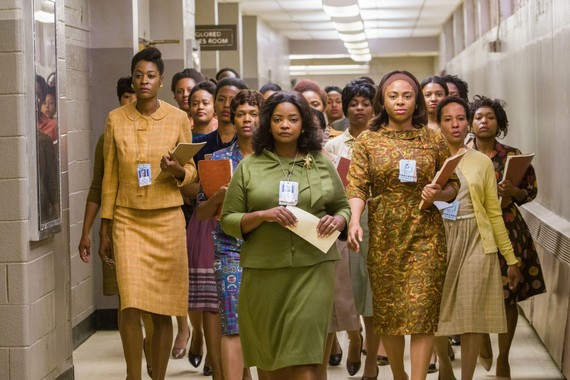
I used approaches from Manthia Diawara, bell hooks, and Tiyi Morris to inform my project, as well as other theories about film studies’ intersection with race and identity.

Research into progressivist films, Black cinema, cinematic depictions of black women, and the contributions of film casting provided a theoretical foundation for my analysis of this film. Using photos, videos, and design elements, this website creates a visually interesting analysis while engaging in important film studies theories. Considering the complexity of cultural work, I created a website containing different pages that address these concepts in depth as a way of bringing together a theoretical framework to address the significance of this film. I support my analysis through the use of theoretical film studies concepts regarding the meaning of acting and star effect, shot editing and mise-en-scene, spectatorship, the political implications of Black cinema, and the historical erasure of marginalized voices in mainstream Hollywood. Therefore, my analysis examines both the conditions of production and the construction of the film that leads to culturally-significant audience engagement. These social contributions come not only from the narrative of the film, but also significantly from the production qualities and choices. The cultural work of film contributes to social and political understandings of race, gender, class, sexuality, and identity. Therefore, the cultural work of this film about three remarkable and overcoming women, while important to promoting the visibility of marginalized achievements, does not create a sense of responsibility for mainstream audiences to recognize and remedy present-day discrimination.

Furthermore, the composition of mise-en-scene serves as a barrier between the story and the audience, preventing the spectator from adequately empathizing with the characters and their struggles. Star effect substantially contributes to this film’s reception with mainstream audiences, solidifying its palatability, not its cultural significance. Indeed, the production choices of Hidden Figures demonstrate appeasement to culturally-dominant White audiences despite the film’s subject matter as a story about overcoming racism and sexism. Manthia Diawara and bell hooks argue that mainstream styles and productions of cinema fail to tell the radical and culturally resistant stories that serve the political needs of historically-marginalized audiences. Therefore, while the film was lauded by critics and viewers, it fails to develop cultural work that adequately acknowledges the connection that discrimination in the past has to the present the conditions of production and the editing of the film contribute to the over progressivist narrative of the film, demonstrating Hollywood’s “white-washing” of marginalized identities and stories. This Fox 2000 Studios film brings these minority experiences to life, but at the same time consciously makes the story palatable to mainstream audiences.

Just the like the “new math” that Katherine Johnson, Dorothy Vaughn, and Mary Jackson discover for John Glen’s orbital space flight, these monumental women were concealed by the shortsightedness of their White colleagues. by Margot Bond IntroductionĪs a film about three pioneering Black women in 1960s Virginia, Hidden Figures tells a true and socially important story about forgotten minority contributions to the Space Race. Theodore Melfi, Hidden Figures, © 2016, Fox 2000 Pictures.


 0 kommentar(er)
0 kommentar(er)
